Biomedical Engineering Reference
In-Depth Information
Collagen
molecule
Femur
Cancellous bone
Collagen
fibril
Collagen
microfibril
Lamella
Cortical bone
Bone
Crystals
Osteon
Haversian
canal
100 nm
1 nm
100-500 mm
0.25
m
μ
3-7 mm
Microstructure
Sub-microstructure
Nanostructure
Sub-nanostructure
Macrostructure
FIGURE 5.8
The hierarchical structure of bone. There are at least five levels of microarchitecture in bone:
(a) collagen molecules, (b) microfibrils with periodic gaps between the ends of the molecules that provide
nucleation sites for bone mineral, (c) fibrils composed of the microfibrils, which form (d) the layers of lamellar bone
shown within a cylindrical osteon, that are the building blocks of the cortical bone of (e) the femur.
5.3.2 Hierarchical Design
Similar to a nested set of eggs or Russian dolls, in which you open up one just to find
another smaller one inside, natural tissues have nested structures. This is known as hierarchi-
cal design. The same structural motif is repeated at multiple-length scales, and this endows
the tissue with efficiency of assembly, properties, and function. During cell-mediated tissue
construction, the smallest units self-assemble first, then these units self-assemble to form
larger units, and finally the larger units self-assemble. This is how a functional tissue or organ
is built. Cells typically become embedded or trapped within the layers of extracellular matrix
as the tissue is built. The cells survive and act to maintain the tissue around them. Lamellar
bone has similar layered fibrillar structures at the nano, micro, and macro levels. At the smal-
lest level there are the alpha chains that have assembled in a triple helix to form the Type I
collagen molecule, the collagen molecules then assemble into microfibrils, microfibrils assem-
ble into larger fibers that assemble by alignment into sheets, and the sheets (lamellae) are
layered like plywood in a crisscrossed orientation around blood vessels to form osteons,
which have a tubular or large fiber appearance (see Figure 5.8).
Skeletal muscle also has a hierarchical structure. The actin and myosin filaments orga-
nize into linear constructs known as sarcomeres, which are bundled into myofibrils, which
are then bundled together to form a muscle fiber (the muscle cell with hundreds of nuclei),
and multiple muscle fibers form the muscle fascicles we call muscle. (See Chapter 3 for a
diagram of this.)
The biological structure of chromosomes is also governed by hierarchical design. Nature
efficiently compacts a 7-cm-long strand of DNA until it is 10,000 times smaller by twisting
and coiling at multiple-length scales. At the nanometer level, DNA is a double helix of












































































































































































































































































































































































































































































































